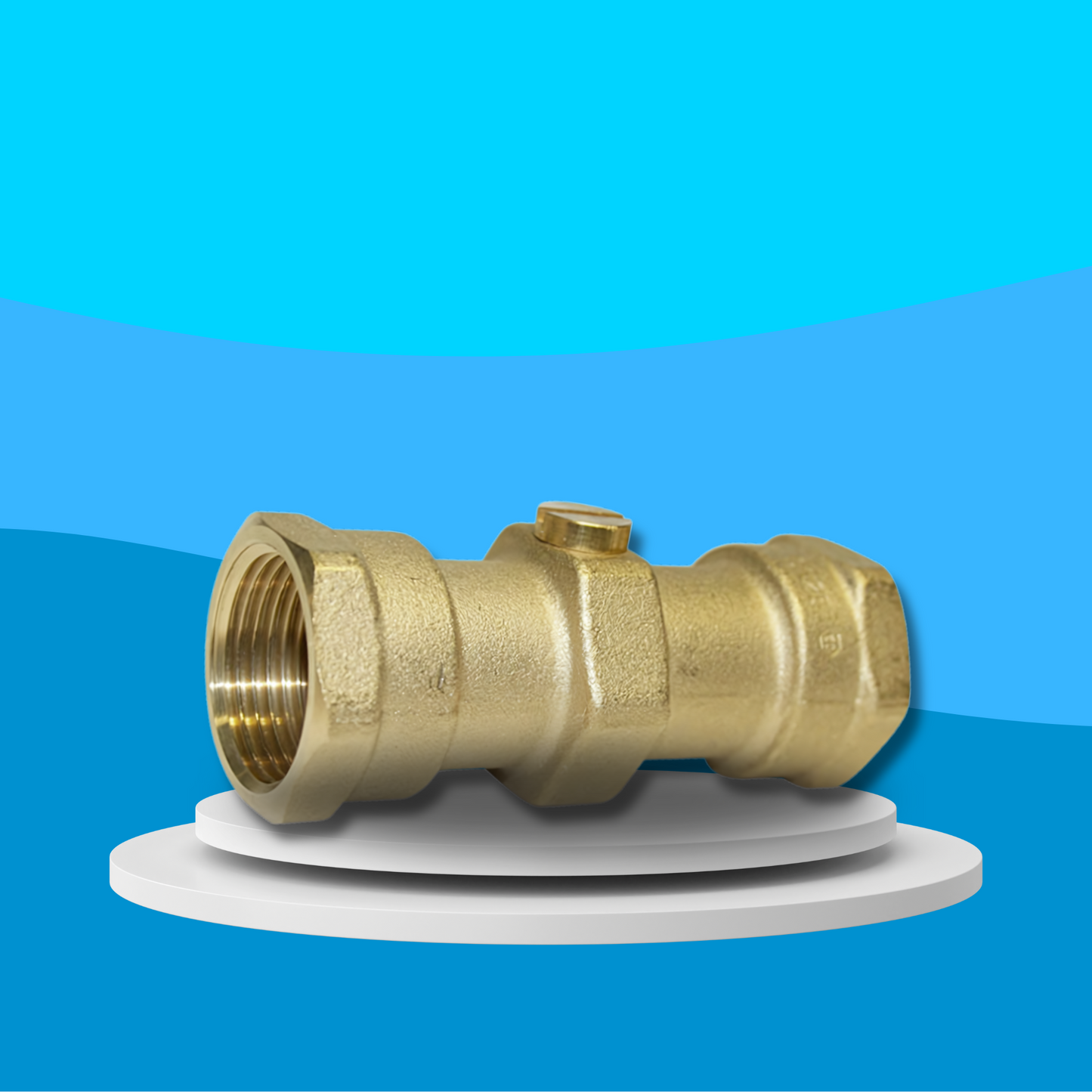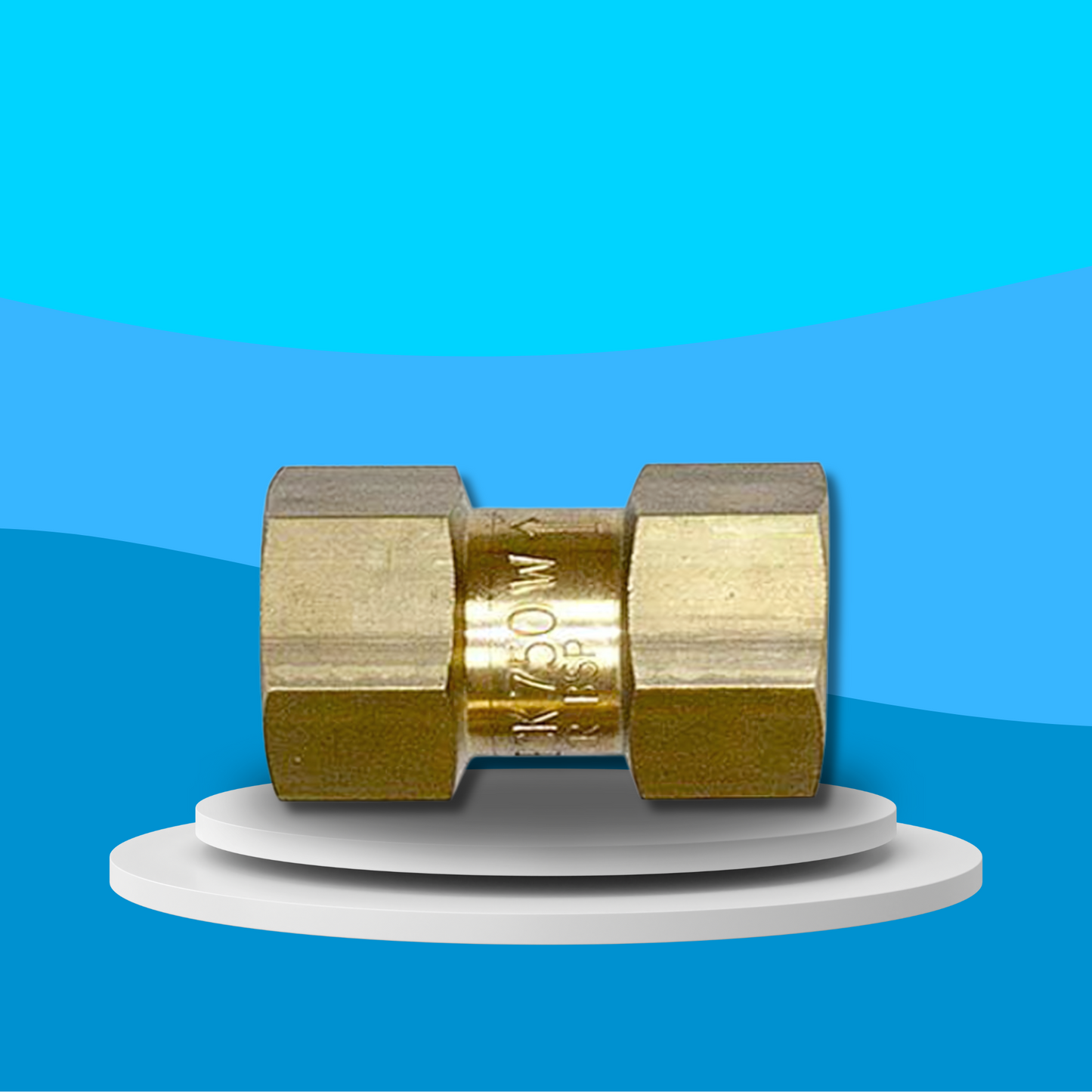Wras Valve
WRAS Approved CR Brass Check Valve
WRAS Approved CR Brass Check Valve
Couldn't load pickup availability
WRAS Certified
Introducing the WRAS Approved CR Brass Check Valve, available in Single and Double models, designed to provide reliable and efficient water flow management in various applications. These valves feature a Screwed BSPP Female configuration and are certified WRAS compliant, ensuring adherence to stringent water safety and quality standards. Engineered to operate seamlessly under a minimum pressure of 0.1 Bar and a maximum of 10 Bar, these check valves perform efficiently up to 85°C, making them ideal for maintaining stability and performance in your system.
Key Features:
- WRAS Approved: Certified to meet high water safety and quality standards.
- Versatile Models: Available in Single and Double configurations to suit diverse applications.
- Robust Construction: Made from high-quality DZR brass for enhanced durability and corrosion resistance.
- Reliable Performance: Efficiently manages water flow with a minimum pressure of 0.1 Bar and a maximum of 10 Bar.
- Temperature Resilience: Operates seamlessly up to 85°C.
- Secure Seals: Equipped with EPDM seals for a secure and leak-proof operation.
- Durable Spring: Features a stainless steel spring for consistent performance and longevity.
- Efficient Check Mechanism: Incorporates an acetyl copolymer check cartridge for reliable flow control.
Specifications:
- Material: DZR Brass (Body), EPDM (Seals), Stainless Steel (Spring), Acetyl Copolymer (Check Cartridge)
- Approval: WRAS Approved
- Connection Type: Screwed BSPP Female
- Pressure Range: 0.1 Bar to 10 Bar
- Temperature Range: Max 85°C
- Pressure Rating: PN16
- Application: Suitable for various water control applications in residential, commercial, and industrial systems
Share


FAQ's
What is the difference between a valve and an actuator?
What types of actuators are available?
The main types of actuators are:
Pneumatic actuators – use compressed air for fast, reliable operation.
Electric actuators – use electrical power for precise control.
Hydraulic actuators – use fluid pressure for high-torque applications.
Each type offers unique advantages depending on the environment, media, and system control needs.
How do I choose the right actuator for my valve?
To select the correct actuator, consider:
Valve type and torque requirement
Power source available (air, electric, or hydraulic)
Operating environment (temperature, humidity, hazardous area)
Control signal type (on/off or modulating)
Matching actuator torque and compatibility with the valve’s ISO mounting ensures reliable performance.
What are the main types of valves used in automation?
The most common valves in automated systems include:
Ball valves – for tight shutoff and quick operation.
Butterfly valves – for larger flow control with compact design.
Globe valves – for precise throttling and flow regulation.
Check valves – to prevent backflow.
Gate valves – for full bore flow isolation.
What’s the difference between a double-acting and spring-return actuator?
Double-acting actuators use air (or power) to both open and close the valve.
Spring-return actuators use air to open (or close) the valve, and a built-in spring to automatically return it to a safe position when power or air is lost — ideal for fail-safe operation.
How often should valves and actuators be serviced?
Regular maintenance intervals depend on operating conditions, but a good rule of thumb is to inspect every 6–12 months.
This includes checking for leaks, lubrication, seal wear, and actuator responsiveness to prevent unexpected downtime.


